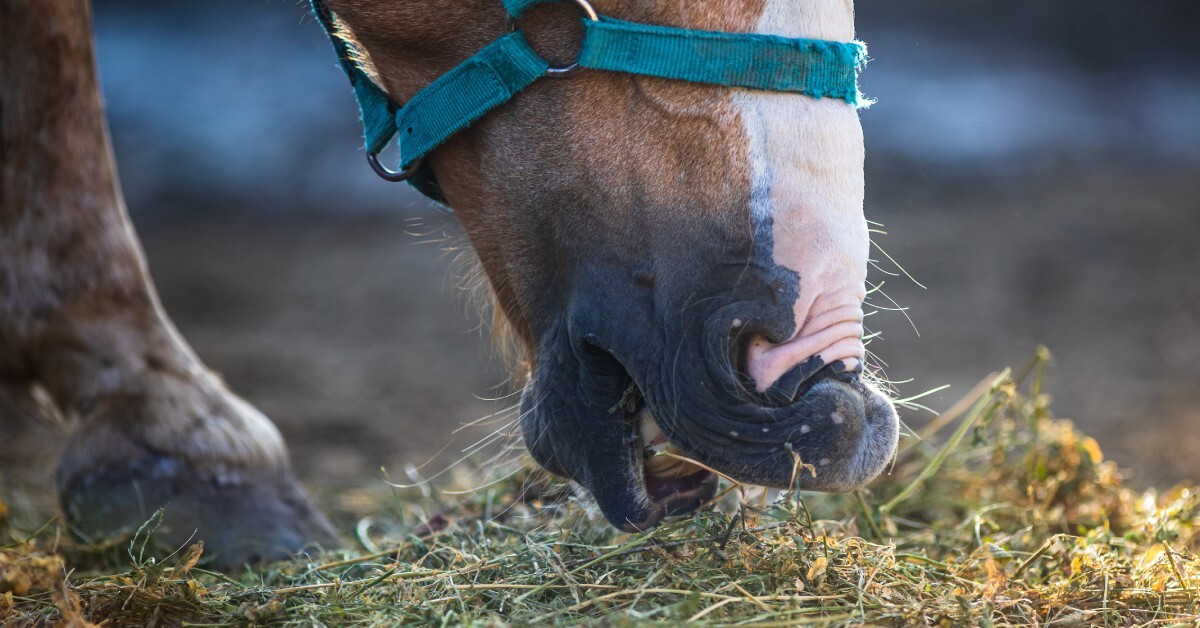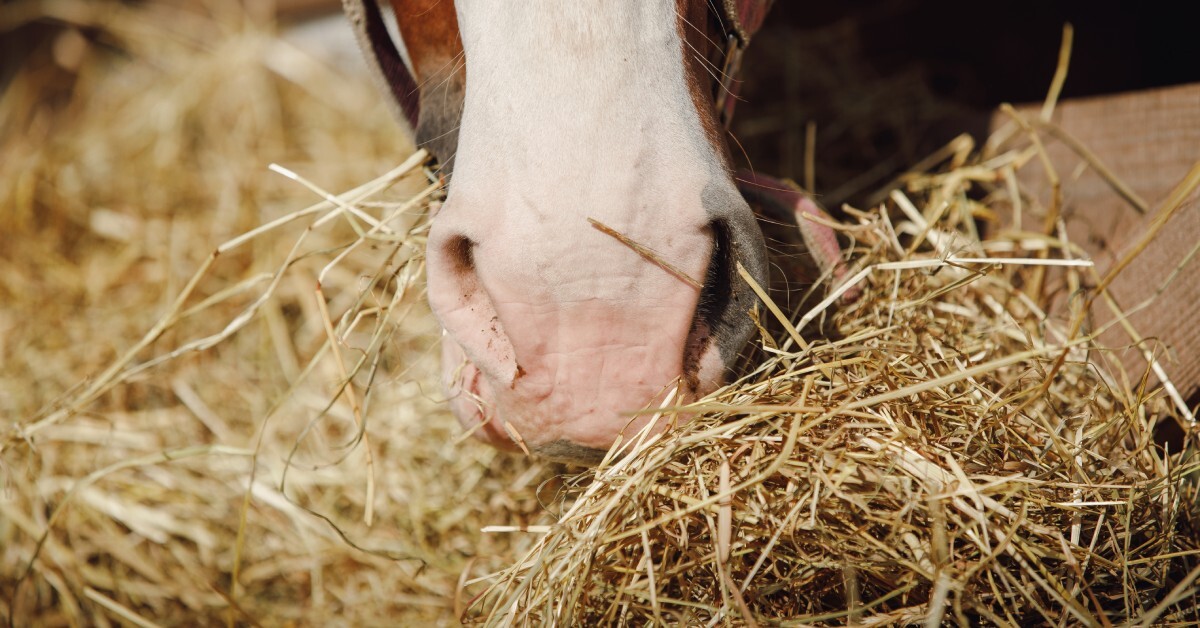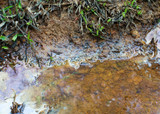A Brief Overview of a Hay Analysis for Horse Feed
Horse owners know that quality forage is the foundation of good equine nutrition. But how can you truly understand what nutrients your hay provides? This brief overview of a hay analysis for horse feed can clear up confusion and help you make the most of the information a lab offers.
A hay test gives you more than just numbers—it provides insight into how well your forage meets the daily requirements of your horses. Let’s explore the critical components in these reports and what they mean for your feeding program.
Moisture and Dry Matter
Moisture levels directly affect whether hay remains safe to feed or turns into a moldy, fire-prone hazard. Hay baled at over 20 percent moisture is at high risk for spoilage and spontaneous heating. Ideal moisture for small square bales is 18 to 20 percent, while large round or square bales should be between 12 and 16 percent due to their lower airflow and increased density.
If your hay analysis shows high moisture, delay baling and allow additional drying time. This may take four to eight hours or longer, depending on the sun, wind, and humidity in your area. To check moisture before baling, use a hay moisture meter inserted into the center of multiple bales.
During storage, space stacks to allow airflow, avoid sealing hay in enclosed barns, and use fans or open sides to reduce trapped humidity. These steps help preserve hay quality and also reduce the risk of barn fires.
Crude Protein (CP)
Crude protein (CP) tells you how much nitrogen-based nutrient is available in your hay—a key component for your horse’s muscle function, immune system, and tissue repair. Most mature grass hay falls around six to 12 percent protein, while early-cut or legume-based hays like alfalfa often reach 15 to 22 percent.
When your analysis shows low protein levels (below nine percent), you may need to supplement with higher-protein hay or a commercial ration balancer. Forage that’s too high in protein may not be ideal for idle horses or those with certain metabolic conditions, and may require dilution with lower-protein grass hay.
Use the CP reading to align feed to the horse’s workload: working horses need more protein than retirees. Tailoring the balance ensures you're not underfeeding or overspending—just meeting the horse’s needs without waste.

Energy Value (Total Digestible Nutrients or TDN)
Total digestible nutrients (TDN) is a measure of the hay’s energy content, essential for fueling your horse’s daily activities, metabolism, and body condition. A TDN of 52 to 58 percent is typical for maintenance-level grass hay, while values closer to 58 to 65 percent are common in legume hay or early-cut forage.
Horses that are underweight or in regular work benefit from higher TDN levels. Conversely, idle or overweight horses do better with hay on the lower end of the TDN spectrum. Too little energy, even in large amounts of forage, means your horse may not consume enough calories to maintain their condition. Too much, on the other hand, can cause unwanted weight gain.
Use TDN as a benchmark to adjust ration size, or consider mixing hay types to meet energy needs without overfeeding. This value is especially helpful when comparing different batches of hay or deciding whether a grain supplement is necessary.
Fiber Content (Acid Detergent Fiber [ADF] & Neutral Detergent Fiber [NDF])
Fiber influences how digestible and filling hay will be. Acid detergent fiber (ADF) reflects how easy the hay is to digest, and neutral detergent fiber (NDF) measures how much hay a horse can consume. For high-quality hay, ADF should fall below 35 percent and NDF below 65 percent.
High ADF levels reduce digestibility and energy availability. Likewise, high NDF hay can reduce voluntary intake, leaving horses with unmet caloric or nutrient needs. To offset these issues, consider mixing hay with more digestible forage or chopping it to increase intake efficiency.
Because fiber also affects chewing time and gut function, it plays an important role in maintaining digestive health. Horses need enough fiber to keep the gut moving and to satisfy natural chewing behavior, but fiber values that are too high can make hay less useful nutritionally.
Minerals (Calcium [Ca], Phosphorus [P], Magnesium [Mg])
Minerals are critical for bone development, nerve function, and metabolic stability. Hay analysis often includes calcium (Ca), phosphorus (P), and magnesium (Mg), which must be present to avoid deficiencies or imbalances.
For adult horses, a Ca:P ratio between 1.5:1 and 2:1 is recommended. Any P level that is too high relative to Ca can hinder Ca absorption and lead to skeletal issues, especially in growing horses.
Mg, while needed in smaller amounts, supports muscle function and calm behavior. When levels are low (under 0.2 percent Mg), supplementation may be necessary.
A mineral imbalance doesn’t necessarily mean poor hay, but it does mean your feeding plan may need adjustment. Rather than assuming your concentrate feed will fill in the gaps, use these values to fine-tune mineral inputs and avoid unintentional deficiencies or excesses. Over time, small imbalances can have a big impact on bone health and performance.

Non-Structural Carbohydrates (NSC)
Non-structural carbohydrates (NSC) include sugars and starches, which directly impact horses prone to metabolic conditions such as insulin resistance, laminitis, or equine metabolic syndrome. Hay with an NSC level above 12 percent is generally considered too high for these at-risk horses.
If your analysis shows elevated NSC, consider soaking the hay in cold water for 30 to 60 minutes to leach out excess sugars. After soaking, drain thoroughly to prevent mold. Choosing earlier-cut grass hays or selecting fields harvested during cooler, overcast days can also reduce NSC levels.
Managing NSC benefits more than just sensitive horses. Even easy keepers with no metabolic problems can gain too much weight if their forage is high in sugars. Keeping NSC in check supports long-term metabolic health and helps reduce the risk of preventable issues.
Additional Parameters (e.g., Relative Feed Value [RFV], Relative Forage Quality [RFQ])
Some hay analyses include indexes like relative feed value (RFV) and relative forage quality (RFQ), which combine digestibility and intake potential into a single score. While originally developed for cattle, these numbers can still offer horse owners a helpful snapshot of hay quality.
An RFV or RFQ score between 100 and 130 typically indicates good-quality grass hay for most horses. A low RFV may reflect high fiber and poor digestibility, but a high score suggests more usable nutrients per pound.
These indexes are best used for comparison. They can help you decide between different hay suppliers or evaluate a new load before purchase. While not a replacement for protein or mineral testing, they do provide an extra layer of insight when choosing forage.
Start With the Right Tools
Even the most detailed lab results won’t mean much if the sample doesn’t represent the hay your horses are actually eating. Inconsistent or poorly collected samples can lead to misleading data, affecting everything from forage balance to supplementation. That’s why a brief overview of a hay analysis for horse feed should always include this reminder: accurate results start with proper sampling.
That’s where a high-quality hay sampling tool enters the picture. Our devices collect uniform core samples from multiple bales, reducing the chance of error and producing a more representative composite sample. By using the right equipment from the start, you can feel more confident that the results you’re working with are reliable and actionable.
To make the most of your hay testing efforts, equip yourself with dependable tools that simplify the job and improve accuracy, starting with our high-quality hay and forage probes designed for consistent, repeatable sampling. Over the long term, accurate sampling means less waste, better feed efficiency, and healthier horses.
Recent Posts
-
10 Reasons Testing Groundwater Is Important
Groundwater is one of the most valuable resources we have. It provides drinking water for millions a …November 20, 2025 -
Why You Should Regularly Check Termite Bait Stations
In industries such as agricultural or groundwater management, unseen threats can quietly undermine y …November 12, 2025 -
How the Mining Industry Uses Sediment Sampling Data
In mining, the decisions made before the first shovel hits the ground can determine the success or f …September 26, 2025




